The Central Dogma of Molecular Biology
Elizabeth Rebarchik and Jim Hutchins
Objective 1: Define the Central Dogma of Molecular Biology.
Molecular Biology Objective 1 Video Lecture
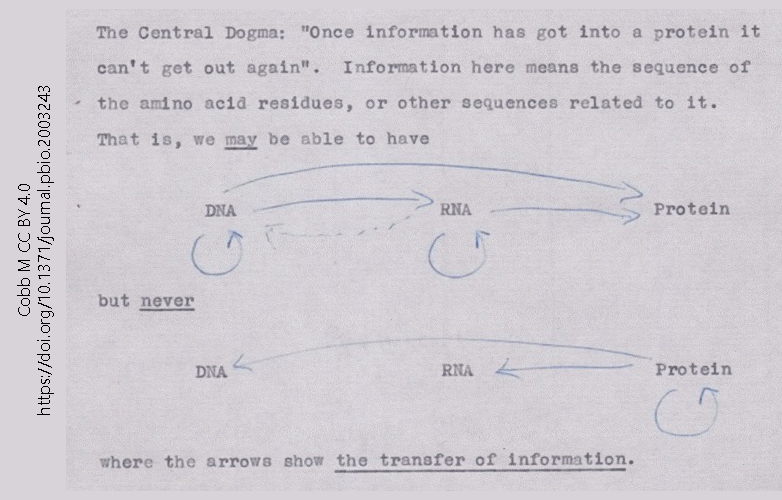
Francis Crick (1957)
I shall…argue that the main function of the genetic material is to control (not necessarily directly) the synthesis of proteins. There is a little direct evidence to support this, but to my mind the psychological drive behind this hypothesis is at the moment independent of such evidence.
In 1957, Francis Crick made some typewritten notes for a lecture he was about to give, and then annotated them with blue pen. From this humble beginning came the concept with the somewhat glorious and self-aware name The Central Dogma of Molecular Biology. Crick’s note was clearly about information flow, but as biochemists and molecular biologists began to investigate the process by which nucleic acids (DNA and RNA) are managed, the theoretical concept of information flow was replaced with the mechanical equivalent: instead of “DNA informs RNA informs protein”, it changed to “DNA makes RNA makes protein”.
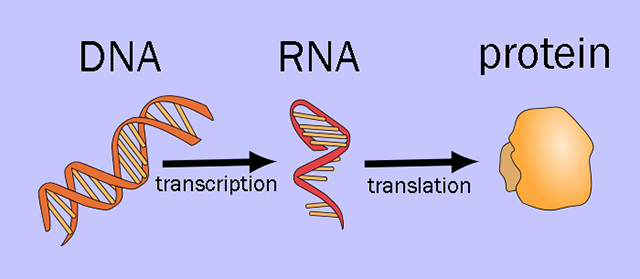
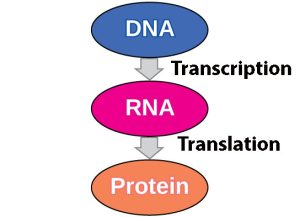 Most modern formulations of The Central Dogma of Molecular Biology state: DNA makes RNA makes protein.
Most modern formulations of The Central Dogma of Molecular Biology state: DNA makes RNA makes protein.
This apparently simple statement contains a lot of information that we need to sort through.
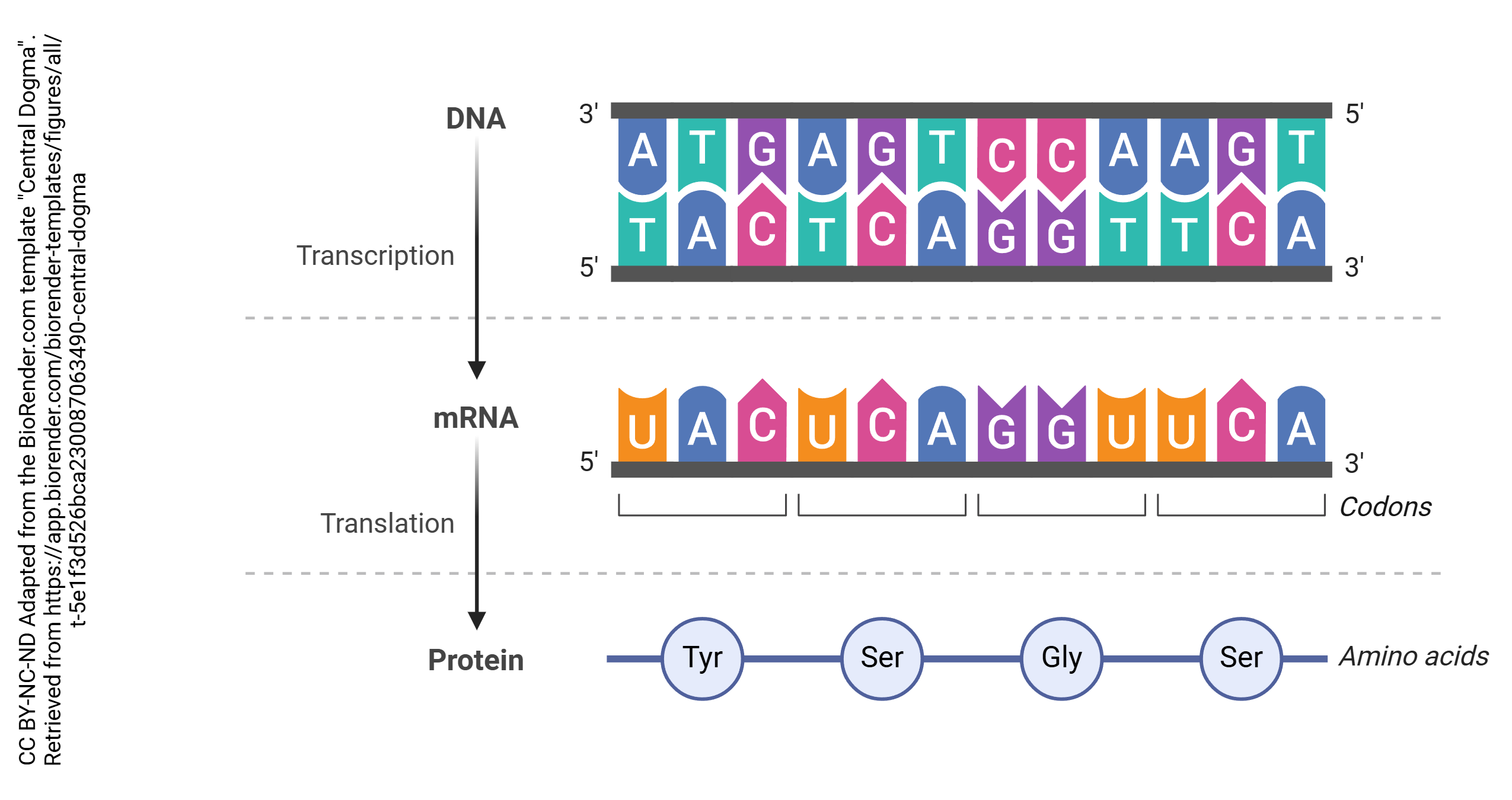
The process by which DNA makes RNA is called transcription. The basic structure of DNA and RNA are the same, a string of nucleic acids arranged in a line from 5′ to 3′, so it’s just like transcribing a radio program into a written record: copying from one form to another in the same language.
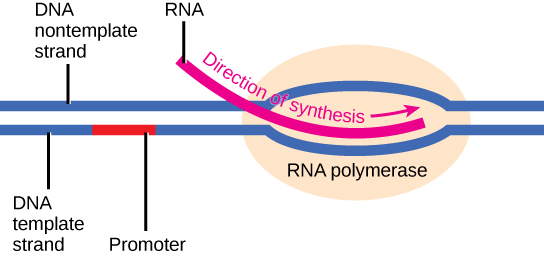
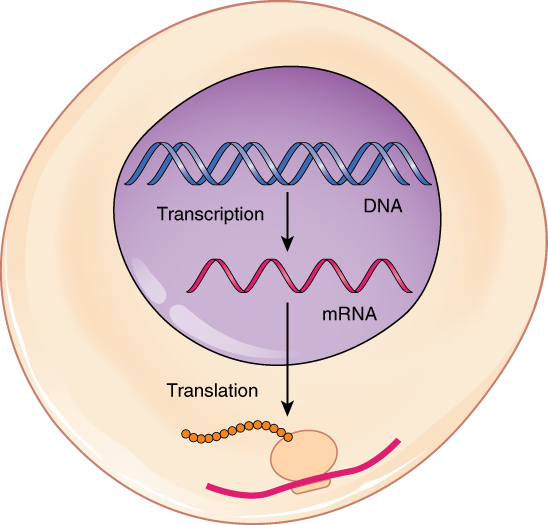
The second step is conversion of RNA to protein, or translation.
The process of translation is the conversion of an RNA code to protein. While RNA is a single-stranded nucleic acid with the bases A, C, G and U carrying the genetic code, proteins have 20 amino acids and a primary, secondary, tertiary and quaternary structure that is completely different from the structure of RNA. It’s appropriate that we call this translation, because we’re converting information from one “language” to another.
The macromolecular machine called the ribosome has parts made of ribosomal RNA (rRNA) and protein, and is the mechanism that converts the code contained in another type of RNA, messenger RNA (mRNA) into a primary protein sequence. In order to do this, we need amino acids that are delivered by a third type of RNA called transfer RNA (tRNA). Here, we can see the essential truth of the second part of the Central Dogma: RNA makes protein.
Media Attributions
- Central dogma © Francis Crick & Matthew Cobb is licensed under a CC BY (Attribution) license
- Central dogma © Squidonius adapted by Jim Hutchins is licensed under a CC BY-SA (Attribution ShareAlike) license
- Central Dogma © Fowler, Samantha; Roush, Rebecca; Wise, James is licensed under a CC BY (Attribution) license
- Central Dogma © Samara Ona adapted by Jim Hutchins is licensed under a CC BY-NC-ND (Attribution NonCommercial NoDerivatives) license
- Transcription © Samantha Fowler, Rebecca Roush, & James Wise is licensed under a CC BY (Attribution) license
- Central dogma © J. Gordon Betts, Kelly A. Young, James A. Wise, Eddie Johnson, Brandon Poe, Dean H. Kruse, Oksana Korol, Jody E. Johnson, Mark Womble, & Peter DeSaix is licensed under a CC BY (Attribution) license

